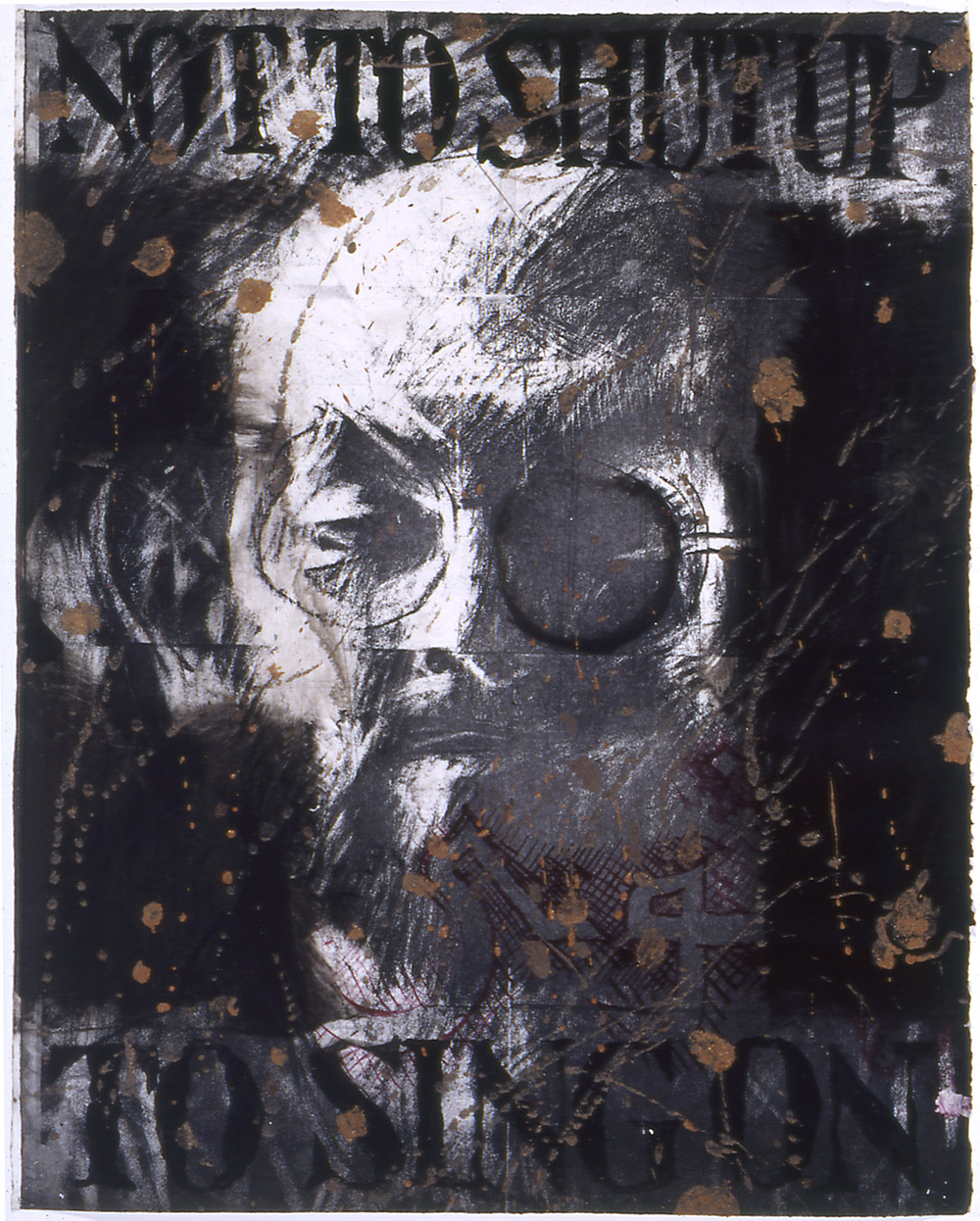‘Writing is like drawing in that it focuses
the mind wonderfully’. –Michael Craig-Martin*
I write these posts in order to understand what I’ve seen or
experienced, better. It is a way of processing, analysing those thoughts for as
much my own record as it may (hopefully) be as of interest to anyone else that
chooses to read it. The same can be said of drawing and my relationship with it
as a means of focusing the mind allowing the opportunity for new thoughts, or
indeed the almost meditative expulsion of having no thoughts at all (both as
equally valuable). Having a passion for
both, with that in mind, I began writing this post about ‘Great British
Drawings’ exhibition of over 100 drawings by artists such as, Gainsborough,
Turner, Rossetti, Millais, Holman Hunt, David Hockney, Gwen John, Walter
Sickert, Ravilious, Edward Lear, William Blake, Samuel Palmer and Tom Phillips
at the Ashmolean in Oxford.
 |
| Tom Phillips 'Salman Rushdie' (probably 1993) Charcoal, red and black body colours, brown mud bound in liquitex mat medium on white paper. |
Most exhibitions I visit are intentional, in the sense that
I plan to go see them. Visiting ‘Great British Drawings’ was more fortuitous in
that I went to see it simply because I had some time to spare! In that respect it was a pleasant surprise
with equally a few seldom-seen gems amongst the collection on display. These
include a Tom Phillips charcoal, mud and liquitex drawing of Salman Rushdie,
(pictured above) which was uncannily Jim Dine like in its drawing style through heavy
use of black and intense mark-making. Elsewhere it was refreshing to see a pen
and ink drawing by Edward Coley Burne-Jones (of Pre-Raphaelite fame) that was
in its small, more intimate scale more engaging and visually interesting in
tone/marks than any of his paintings in my opinion. A few more of the
Pre-Raphaelite ‘gang’ had work displayed in this exhibition and whilst I
wouldn’t say I’m a fan of work from that period the difference in a perceived sense
of warmth between their drawings and their paintings was quite striking. It
reaffirmed that the pre-emptive nature of drawing, in the way it was used often
before or as a way of composing a painting is so much more revealing of the
artists hand and first impression of what they are looking at often than the
painting. The painting is more measured in that it has been considered, edited
and planned to convey what the artist ‘wants you to see’ whereas a drawing can
be as considered but is often more ‘of the moment’ and sort-of as consequence,
I feel, slightly more real (‘real’ in the integrity sense of the word rather
than necessarily ‘realistic’) Turner is however a good exception to this theory
whose drawings are also in this exhibition, he paints very much how he draws
and the drawings inform the painting as much as the drawing is informed by the
materials he is using. Again, it was
great to see these smaller on paper watercolours which if anything felt
slightly fresher and less laboured than some of his paintings.
 |
| Samuel Palmer 'The valley with a bright cloud' (1825) Pen and dark brown ink with sepia mixed with gum Arabic, varnished. |
 |
| Edward Lear 'Contstantinople from Eyoub' (1848) Pen and brown ink with watercolour over graphite on wove paper. |
Flavour of the month, Eric Ravilious also had a drawing
present in this exhibition along with Samuel Palmer (pictured above) who feels
vaguely similar in that both were attempting to depict the romanticism of the
English landscape, the undulating hills, cloudy skies, ploughed furrows in
fields, rows of corn, hidden pathways, stone walls and all the variety in
textures of trees, leaves, hedges and fauna. I also admired the draughtsmanship
of artists such as Edward Lear whose illustrations I was familiar with but
until now had never seen these more technical drawings (pictured above) which although
preparatory for something finished are still quite elegantly sensitive and
informative in their own right. There
was also work that reminded me of the importance of drawing as capturing an
impression of something and the immediacy and observational sketchiness of John
Sell Cotman’s ‘A Ruined House’ (pictured below) being one example and also a more
unusual contrast to the familiar subject matter predominantly limited to classical
architecture or castles (though many of these perhaps also united to this
drawing in being ruins but of a slightly different nature).
 |
| John Sell Cotman 'A Runined House' (1807) Watercolour over graphite on paper. |
This was a quietly contemplative exhibition, with lots of
looking and noticing attention to detail of the kind which drawing tends to
invite more gently than painting so whilst the Ashmolean probably possess infinitely
more work they could have possibly shown in the space it still felt as though
there was a lot to see. Certainly a lot to think about.
‘Great British
Drawings’ is on at the Ashmolean, Oxford until August 31st.
*Taken from CRAIG-MARTIN, M; ‘On being an
artist’ (2015) Art Books Publishing: London. p8.
*Images from: http://www.tomphillips.co.uk; http://lowres-picturecabinet.com; http://www.myartprints.com

No comments:
Post a Comment